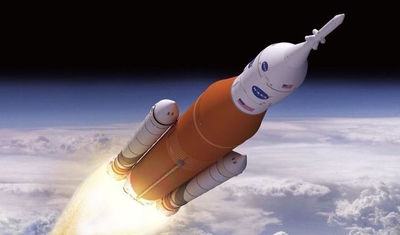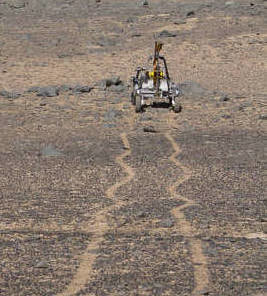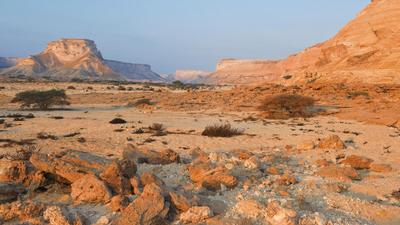Gabriela Albandes de SouzaInnovaSpace Culture & Education Project Manager InnovaSpace took another step this week towards achieving its aim of bringing space closer to society, to reach out to underserved communities, and to make science and space more accessible and inclusive, when InnovaSpace founder Thais Russomano gave a virtual lecture about the participation of women in the space programme to an audience of 39 young ladies, aged between 10 and 12 years from two state-run schools in Gravataí, Brazil, as part of a project called ‘Elas no Lab’ (Girls in the Lab).  Project organisers Eduarda Rosa Ferreira, Indáia Pereira de Matos and Júlia Alvares Missel Project organisers Eduarda Rosa Ferreira, Indáia Pereira de Matos and Júlia Alvares Missel This project is the brainchild of three high school students from the Escola Sesi de Ensino Médio Albino Marques Gomes, a private high school in the same city in southern Brazil. Eduarda Rosa Ferreira, Indáia Pereira de Matos and Júlia Alvares Missel had the idea of creating workshops to raise the interest of young girls to pursue scientific careers, as part of a project led by their Physics teacher Cláudia Fraga Germano. Cláudia set her students the task of developing projects that would benefit state-run schools, which often do not receive sufficient funding to invest in the sciences, and lack proper laboratories and equipment. The activities also involved a rocket building workshop using recycled materials, a VR glasses experience that allowed the girls to virtually “travel around the universe”, the photo and video recording of the activities, and an exclusive Q & A session about space science with Thais Russomano at the end of her lecture. Feedback from the girls who attended the event was very positive, with many celebrating this unique and fun experience of learning about science. Another mission accomplished successfully due to a collaboration of working ideas and ideals in partnership! However, consider this just a first step – as InnovaSpace is proud to announce the launch of a new outreach project called Valentina – more details to be posted soon! Thais RussomanoInnovaSpace Founder, CEO & Scientific Director The importance of STEM (Science, Technology, Engineering, and Maths) education has long been talked about, with education policy and curriculum choices targeting these areas to improve competitiveness in science and technology development, and to try and address the shortage of skills in the workforce. While these subjects are extremely relevant in today's world, they do not underpin the innovative process in isolation, often requiring a streak of creativity and imagination to set an idea free. History demonstrates well the productive link between the STEM areas and Art, with Leonardo da Vinci being a classic example - both a great scientist and astounding artist. The practice of art in its numerous senses, such as, language, physical art, music and design, among many others, can provide imaginative opportunities for communication and expression and inspire the young to be creative with their ideas. Blending art into the STEM areas can also provide a conduit by which to attract the interest of those who might not normally consider the sciences. Although a scientist and doctor myself, I have always been drawn to the arts and am equally as happy writing an article on space physiology as I am writing a romance novel. So when I was contacted by a gentleman from a theatre group wanting to know if I could share a little space knowledge with them, I was delighted to say yes!  The FLUX Phase theatre group brings together a diverse group of actors in training, currently completing an MA in Acting at the E15 Acting School in Loughton, Essex. Their latest production is based on Einstein's Theory of Special Relativity, which states that as you travel close to the speed of light, time passes more slowly. So imagine if one identical twin makes a journey into space on a near light-speed spaceship, leaving the other twin at home on Earth, and then returns from 30 years space travel. Will the twin who stayed home have aged more? Will one look much older than the other? This is the Twin Paradox! WHY EDUCATORS NEED TO CHANGE THE MISLEADING PERCEPTION OF STEM IN FEMALE STUDENTS Blog written by Susanne Cappendijk, PhD, MBA, Founder and CEO of EDsnaps Inc, a 501(c)(3) organization focused on "Increasing Diversity in the STEM Workforce", New York City, NY, USA On a bright September morning some 4 years ago, I was preparing the voluntary before-school session for the middle school SciGirls Club Program in Tallahassee, FL. One of the 6th graders entered the classroom stating, “Hey Dr. C, I like SciGirls a lot, but I do not like math”. Over the past 20 years, I have heard this statement and its variations repeatedly from female students, ranging from age 5-18. And every time I hear it my blood starts boiling, my toes are cringing, my eyes are turning red and smoke comes out of my ears; you get the picture. However, I play it cool and ask the student, “Why do you not like math? You do math all the time and you are pretty good at it as you are here on time!” Then I explain to the student that in order to be on time, she used math as an application to calculate the time needed to travel from home to school. Students often do not consider time as a concept of math. In the STEM curricula that I designed over the years, we use a variety of applications to show that STEM is fun. Physics is fun when applied in a self-defense seminar. Math is fun when applied on a 3D-cube shape. Engineering is fun when applied to building an electric circuit. And who does not like to step into Augmented or Virtual Reality, which applies and combines numerous disciplines of STEM. Why do students in general, and female students in particular, demonstrate a misleading perception towards STEM disciplines? The Oxford Dictionary defines perception as “a way of regarding, understanding, or interpreting something, a mental impression”. The reason(s) for having this misleading impression can be due to several factor(s): geo-location, gender, family heritage, socio-economic classes, educational programs, and cultural background. Every one of us has experienced this issue (in)directly. Think of the family member who did not like math and repeatedly shared this vision, or a teacher discouraging your friend because she did not have grades to apply to a good college, or a neighbor discouraging girls not study math because math is not for girls, or parents who are not supportive of their daughters pursuing a post secondary education.
How can we interrupt this flow of misleading perception? Is the mental impression irreversibly anchored in the minds of female students? As a neuroscientist I argue that it is not. Everyone, including students, is exposed to the outside world, which continuously affects the brain circuitry. A STEM outreach program that provides positive real-life fun STEM experiences might initiate a perpetual central change. One might argue that this thought is simple, idealistic, and imperfect. However, I am not striving for perfection since perfection usually means stagnation and stagnation is detrimental to a change in mental impression. Blog written by Mary Upritchard, InnovaSpace Admin Director It really is just a matter of time before a manned space mission is launched into deep space, whether once more to the Moon or more likely to Mars. Of course, the time scale is still being measured in years, but interest in such a venture is growing fast and there are already leading players with plans to reach the Red Planet in the next decade.
Elon Musk of SpaceX has an ambitious plan to send a crewed rocket to Mars by 2024 using an under-development reusable rocket that will ultimately replace his Falcon rockets; the Mars One group are aiming to land a Mars crew by 2031 using technology bought from other aerospace companies; and NASA is currently testing its Orion spacecraft for use with the heavy-lift Space Launch System (SLS), a rocket that will be capable of propelling humans and cargo out of Earth orbit. The NASA journey to Mars will include a series of stages, an ambitious step-by-step plan to put humans into low-Mars orbit by the 2030's. The Earth Reliant phase will continue to build on research already being conducted on the International Space Station; the Proving Ground phase will see a series of missions near the Moon – called “cislunar space” – assessing the capabilities needed to live and work on Mars; and finally, the Earth Independent phase will test the entry, descent and landing techniques needed to alight safely on the Martian surface, and study how the natural planet resources can be used to sustain a human presence.
Manned exploration of Mars is really only a matter of time, and some even say it is a necessity that we step foot on Martian soil. Stephen Hawking declared at a lecture in 2008 "If the human race is to continue for another million years, we will have to boldly go where no one has gone before", while SpaceX entrepreneur Elon Musk confirmed his belief that "Humans need to be a multiplanet species" in an interview with website Slate in 2015. Currently there are two operational and mobile US Mars rovers exploring the surface of the planet, Opportunity landed successfully in 2004 and Curiosity in 2012, so there is already much we know about the surface and landscape of the Red Planet. What awaits any visitors to Mars is a very hostile and harsh environment; its atmosphere is about 100 times thinner than Earth's and is 95% carbon dioxide; temperatures can range from -125°C near the poles in winter to +20°C at midday near the equator; and the surface is covered in a layer of dust containing very fine-grained silicate minerals that tend to stick to surfaces and could be hazardous if breathed in. So the question is how to prepare astronauts for what they are likely to confront on an inhospitable planet that lies at least 55 million kilometres away? "An ounce of practice is worth more than tons of preaching." There is undoubtedly no landscape on Earth that can exactly match the harshness of the Mars conditions, however, we can get close, such as on Mauna Loa volcano, Hawaii where Hi-SEAS analogue missions take place, the Atacama desert in Peru/Chile with its Mars-like arid soils where only the most limited of bacteria can survive, and the Dhofar desert in Oman, where in February 2018 the AMADEE-18 Mars analogue will take place. The use of field research in an environment that mimics Mars conditions in some form is an excellent way of gaining experience, practicing for the 'real thing', but more importantly, understanding the advantages and limitations presented by remote science operations where access to and communications with a central control are subject to difficulties and delays.
The next decades will undoubtedly witness greater long-term extraterrestrial space exploration, as mankind endeavours to establish Moon bases for the commercial mining of minerals, and to fulfil dreams of sending manned-missions to Mars. For such plans to be realised, many technological obstacles have yet to be overcome, which will require fresh minds, new ideas and innovation – but where will this new space industry workforce come from? Already there are reported shortages of qualified workers in the US aerospace industry, a situation repeated in the UK with a lack of skills in the STEM areas. This scenario is set to become worse as the space sector grows. For example, according to the UK Space Agency, the industry is growing four times faster than the rest of the economy and will demand many new additions to the current 70,000 strong highly-skilled workforce, as recently confirmed by former NASA astronaut Stephen Frick for City A.M. newspaper. So how will we plug this gap? How can we capture the interest and enthusiasm of the youths who will become the next space generation? "I hear and I forget. I see and I remember. I do and I understand."
Where once there was STEM, there is now STEAM! The classic subject areas of Science, Technology, Engineering and Mathematics have been joined in recent years by Art and design, as educators try to stimulate and encourage young minds to interweave the traditional learning subjects with art elements and practices, in an integrated approach. The imagination of learners can be sparked by giving them the freedom to apply creative thinking and design skills to STEM projects, leading to innovative thought and greater engagement with subjects that can sometimes be seen as intimidating.
In a project lasting over three years, artist Aleksandra Mir has combined art with a focus on Space and scientific discovery to stimulate thought, particularly in regard to satellites and human space flight. Aleksandra and a team of 25 young collaborators have created a 200 metre long hand-drawn Space Tapestry using marker pens on canvas, which reveals an episodic visual story of space travel. In addition, Mir interviewed sixteen professionals from the space industry and academia, as she sought to gain an understanding of the infinite universe (in which we are merely the tiniest dot) and the science that has allowed mankind to travel into Space. One of the sixteen interviewees was our very own Space Doctor, InnovaSpace Director Thais Russomano, who was happy to explain to Aleksandra about microgravity and the human physiology problems that can be caused by exposure to it. Dr. Russomano is no stranger to the world of the arts and firmly believes in the importance of promoting multidisciplinary learning, bringing together different but complementary sets of skills to enhance the learning experience. She believes that art most certainly has a role to play alongside the STEM subjects, reinforcing this idea in the Space & Design workshops she gives at Aalto University, Finland. Space Tapestry is currently on exhibition for free at two venues in the UK: Tate Liverpool until 15th October 2017; and Modern Art Oxford until 12th November 2017. The book entitled, Can't Stop Thinking About the Future, is available to purchase from Strange Attractor in the UK and MIT Press in the US. TRAILER from Aleksandra Mir on Vimeo.
Blog written by Mary Upritchard
|
Welcometo the InnovaSpace Knowledge Station Categories
All
|
InnovaSpace Ltd - Registered in England & Wales - No. 11323249
UK Office: 88 Tideslea Path, London, SE280LZ
Privacy Policy I Terms & Conditions
© 2021 InnovaSpace, All Rights Reserved
UK Office: 88 Tideslea Path, London, SE280LZ
Privacy Policy I Terms & Conditions
© 2021 InnovaSpace, All Rights Reserved













 RSS Feed
RSS Feed